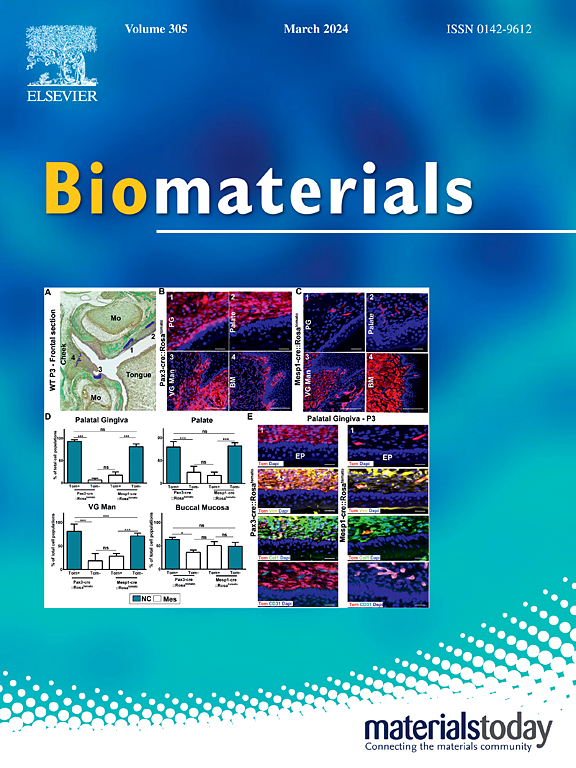A tumor heterogeneity-independent antigen-responsive nanocarrier enabled by bioorthogonal pre-targeting and click-activated self-immolative polymer
IF 12.8
1区 医学
Q1 ENGINEERING, BIOMEDICAL
引用次数: 0
Abstract
Bioorthogonal pre-targeting alleviate the limitations of traditional nanomedicines in passive and active targeting delivery. However, the high selectivity of bioorthogonal pre-targeting depends on the high expression level of antigens in lesion sites, and there are very limited targets with sufficient overexpression. Herein, we propose a tumor heterogeneity-independent antigen-responsive nanocarrier utilizing bioorthogonal pre-targeting and click-activated self-immolative polymers for stimulus signal conversion and amplification. This approach comprises a tetrazine (Tz) conjugated with trastuzumab (T-Tz), and a bioorthogonally activatable nanocarrier CONP which self-assembled by isocyanide and polyethylene glycol-modified poly (thiocarbamate) (NC-PTC-PEG) and hydrogen sulfide (H2S)-responsive self-immolative polymers. In practice, T-Tz is first injected to actively pretarget HER2-positive tumor cells and followed by the second injection of nanocarrier CONP. The NC-PTC-PEG in CONP undergoes a click reaction with Tz to generate H2S, thereby achieving the transformation from antigen signal to H2S signal. Finally, NO2-PTC-PEG responds to H2S stimulation and undergoes a head-to-tail depolymerization process similar to dominoes to produce a large amount of H2S, further amplifying the stimulus signal. This bioorthogonal pre-targeting combine with click-activated self-immolative polymers is anticipated to enhance the effectiveness of existing pre-targeting strategies for tumor imaging and therapy, with the potential to overcome challenges posed by tumor heterogeneity.
求助全文
约1分钟内获得全文
求助全文
来源期刊

Biomaterials
工程技术-材料科学:生物材料
CiteScore
26.00
自引率
2.90%
发文量
565
审稿时长
46 days
期刊介绍:
Biomaterials is an international journal covering the science and clinical application of biomaterials. A biomaterial is now defined as a substance that has been engineered to take a form which, alone or as part of a complex system, is used to direct, by control of interactions with components of living systems, the course of any therapeutic or diagnostic procedure. It is the aim of the journal to provide a peer-reviewed forum for the publication of original papers and authoritative review and opinion papers dealing with the most important issues facing the use of biomaterials in clinical practice. The scope of the journal covers the wide range of physical, biological and chemical sciences that underpin the design of biomaterials and the clinical disciplines in which they are used. These sciences include polymer synthesis and characterization, drug and gene vector design, the biology of the host response, immunology and toxicology and self assembly at the nanoscale. Clinical applications include the therapies of medical technology and regenerative medicine in all clinical disciplines, and diagnostic systems that reply on innovative contrast and sensing agents. The journal is relevant to areas such as cancer diagnosis and therapy, implantable devices, drug delivery systems, gene vectors, bionanotechnology and tissue engineering.
 求助内容:
求助内容: 应助结果提醒方式:
应助结果提醒方式:


